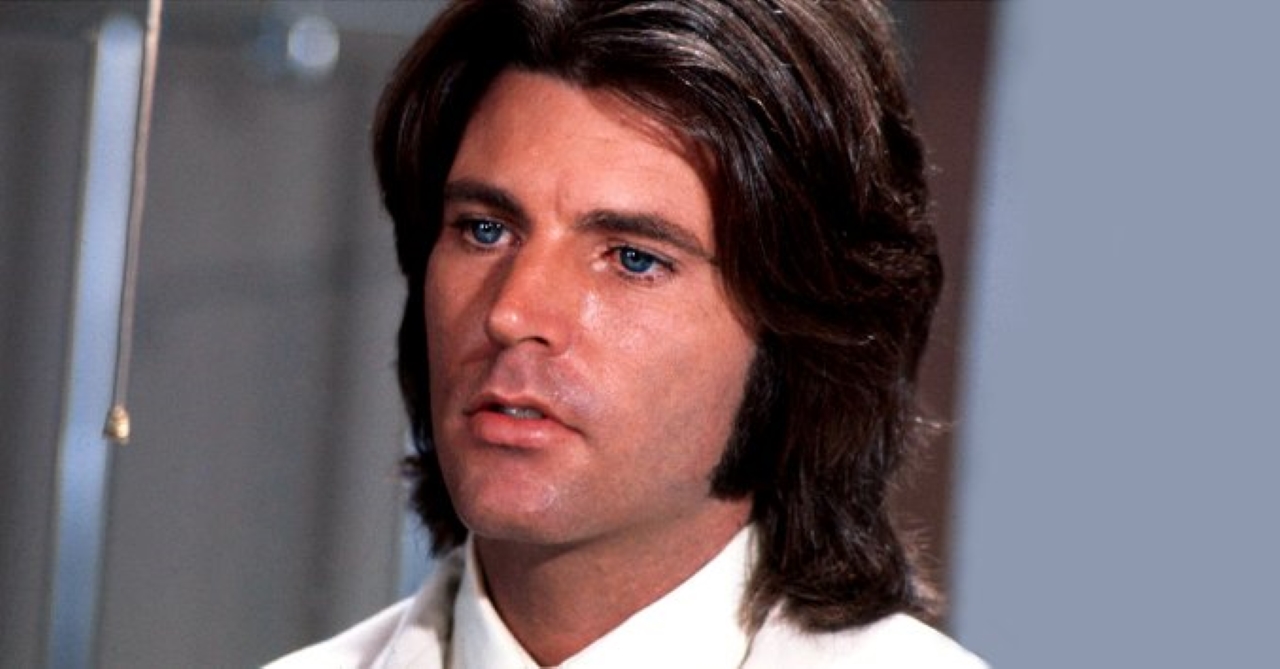🌑 The Birth of a Song for the Lonely
In 1958, at the height of the rock & roll revolution, Ricky Nelson released a ballad that sounded nothing like the electrifying sounds of Elvis Presley or Chuck Berry. It was called “Lonesome Town”, written by Baker Knight. Instead of the pounding rhythm of drums or the swagger of guitar solos, the song was stripped down, quiet, and hauntingly simple. Over delicate guitar chords and a mournful backing vocal, Ricky sang with the kind of restrained sadness that felt almost confessional.
“There’s a place where lovers go,
to cry their troubles away…”
The world had never heard a teen idol sing with such naked vulnerability. Teenagers who were supposed to scream for Ricky Nelson suddenly sat in silence, listening to him describe a mythical town where broken hearts resided.

💔 A Teen Idol Who Sounded Like a Broken Man
Ricky Nelson was only 18 when he recorded “Lonesome Town.” Yet his delivery carried the weight of someone far older, someone who had already lived through heartbreak. Unlike the polished, crooning style of Frank Sinatra or the rebellious growl of Elvis, Ricky’s voice was calm, almost detached. That detachment, however, made the sadness cut deeper. It wasn’t dramatic—it was quietly devastating.
Fans quickly connected to it. In the late 1950s, America was shifting: teenagers were learning how to navigate heartbreak, peer pressure, and the loneliness of modern suburban life. Ricky had tapped into a universal emotion.
🌆 The Town That Everyone Recognized
“Lonesome Town” wasn’t just a song—it was a metaphor. It wasn’t a physical place; it was the invisible city everyone visited at least once in their lives. Listeners knew exactly what Ricky meant. They had been there when they were dumped by their first love, or when they felt invisible at school, or when they sat in their bedroom at night staring at the ceiling, feeling like no one understood them.
The song gave form to a feeling. Suddenly, loneliness wasn’t just a private pain—it was something Ricky Nelson sang for millions.
🎤 A Radical Contrast in a Rock & Roll World
When released as the B-side to “I Got a Feeling” in September 1958, “Lonesome Town” became a hit in its own right, climbing to No. 7 on the Billboard Hot 100. It was remarkable because the music industry was dominated by upbeat, fast, and rebellious rock & roll. Yet here was a ballad so slow and mournful that it felt like a funeral hymn for young love.
That contrast made it timeless. While other songs captured the excitement of jukeboxes and drive-in dates, “Lonesome Town” captured what happened after—the silence, the emptiness, the heartbreak.
🌟 Why It Resonated With a Generation
The late 1950s marked the rise of the “teenager” as a cultural identity. For the first time, young people had their own music, fashion, and heroes. But with that came the universal struggles of growing up. Ricky Nelson embodied the teen idol—handsome, clean-cut, and seemingly perfect. Yet in “Lonesome Town,” he revealed imperfection. He admitted that even the idol could be broken, even the golden boy could feel alone.
That honesty was revolutionary. It allowed fans to project their own sadness onto him. Ricky became not just a star to adore but a voice for their private sorrows.
🎬 From Soundtrack to Symbol
“Lonesome Town” didn’t just live in the charts. Over the decades, it reappeared in unexpected places. Quentin Tarantino famously used it in Pulp Fiction (1994), introducing Ricky’s haunting ballad to a new generation. The scene—quiet, unsettling, dripping with irony—proved how timeless the song’s aura remained.
It has since been covered by artists from Paul McCartney to Johnny Cash, each recognizing the raw emotional truth embedded in its simple structure. But no version carried the same fragile sincerity as Ricky’s original.
🌹 Ricky’s Personal Connection to Loneliness
Though Ricky Nelson was a superstar, his life mirrored the themes of “Lonesome Town.” Behind the charming smile, he often wrestled with isolation. Fame had placed him in the spotlight since childhood, starring on his parents’ TV show The Adventures of Ozzie and Harriet. Yet growing up in front of America left him struggling to define himself privately.
In later interviews, Ricky admitted that being idolized was both a blessing and a burden. People wanted the version of Ricky they saw on television, not the quiet, introspective young man he truly was. “Lonesome Town” became a kind of confession—a way of saying he too had walked those lonely streets.
🕊 The Lasting Legacy
Decades later, “Lonesome Town” remains one of Ricky Nelson’s most defining songs. While he had bigger commercial hits like “Poor Little Fool” or “Travelin’ Man,” this ballad is often remembered as his emotional masterpiece.
It taught the music industry a valuable lesson: vulnerability sells. By baring quiet sadness, Ricky connected more deeply than if he had simply delivered another upbeat teenage anthem. The song also paved the way for future artists—from Roy Orbison’s heartbreaking ballads to the confessional lyrics of singer-songwriters in the 1970s.
🎵 The Song That Never Leaves
In many ways, “Lonesome Town” is eternal because loneliness is eternal. Each generation rediscovers it and feels the same chill in Ricky’s voice, the same ache in its lyrics. It remains a reminder that no matter how glamorous someone looks on stage, no one is immune to heartbreak.
For Ricky Nelson, it was more than just a hit—it was his soul made audible, his quiet rebellion against the glossy image of teen idols. He wasn’t perfect. He wasn’t always happy. And through “Lonesome Town,” he let the world know.